Technology at Work - Stock Beneficiaries on the Advance of Automation
This is a really great report from Citi focusing on the beneficiaries of automation and the increasing pace of technological innovation. I recommend downloading it now even if you plan to revisit it later. Here is a section:
The Pace of Technological Change
Firstly, the pace of technological change has accelerated and now risks outpacing labour’s ability to adapt. It took 119 years for the spindle to diffuse outside Europe. By contrast the Internet spread across the globe in only seven years. Technology, connectivity and globalization have accelerated the rate of change in innovation. In 1980 one billion people were integrated into the global economy compared to 6 billion today. In 2011, when Facebook analysed their users, they found on average there were only 4.7 degrees of separation between any two users anywhere in the world. Crowd sourcing and crowd funding have also helped spur innovation. Start up speed and costs have also been aided by the advent of cloud computing where costs have been falling at c.50% every three years since 2006. The ability to collect and analyse data now often happens in real time, allowing firms to adjust offerings dynamically. The impacts on innovation are being seen across multiple industries, from newspapers to taxis, music to TV cord cutting and peer-to-peer lending to mobile payments. The GPS report shows a significant amount of innovation and change is happening in the fields of automation and robotics.The Scope of Technological Change
Secondly, the scope of technology change is increasing. A big data revolution, increased connectivity and machine learning algorithm improvements mean that more occupations are at risk of being substituted by technology, including tasks once thought quintessentially human such as navigating a car or deciphering handwriting. Carl Benedict Frey and Michael Osborne's study predicts 47% of US jobs are at risk of computerisation. With the caveat that measurement problems exist when comparing countries, further studies of jobs at risk outside the US have found 35% of UK jobs and 54% of EU jobs are at risk. By US industry, employment in agricultural, management and education are estimated to have a low risk of computerisation, while those most at risk include real estate (67%), transport & warehousing (75%), and accommodation & food services (87%).A significant part of the GPS report shows these changes are happening now. In financial services, which has an estimated higher than average 54% of US jobs at risk, we are seeing several examples of technological substitution: asset management continues to migrate from active to passive or ETF funds; new Exchange Traded Managed Funds could bring automation to the financial service distribution process; electronic trading has swept through markets such as equities, with a 50% reduction in trading headcount over the past 10 years, and could expand to other products; algorithms are being used in both high frequency trading and retail asset allocation; digital banking is reducing bank branches and staff levels; cash is also being substituted by mobile payments or digital money, where contactless payments can be over 10x quicker than cash or chip and pin payments, reducing both human time and errors.
Here is a link to the full report.
The pace of technological innovation is such that change is happening faster than most people are comfortable with. One of the reason’s my wife and I picked the school we did for our kids is because they have a heavy focus on technology and our kids will be learning to program Python from age 10.
Perhaps the most underappreciated benefit of the internet is in its role of connecting likeminded individuals who can help each other further innovative research. This means that as computing power becomes faster and more available that there is no logical limit to the extent of innovation. There will be winners and losers. Obviously non skilled workers are at risk while mass employers may benefit from innovation.
Some of the companies mentioned in the above report can be considered speculative. However there are a number subscribers will be familiar with following reviews of the technology sector over the last few years.
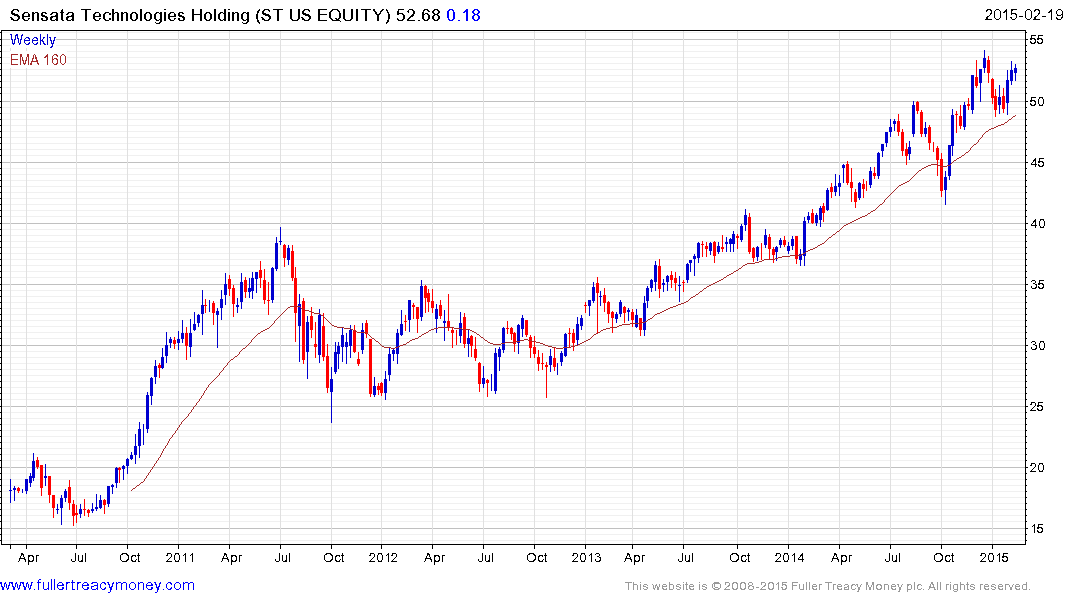
Sensata Technologies is a leader in the development of sensors for aircraft and automobiles and an Autonomy. The share remains in a consistent uptrend.
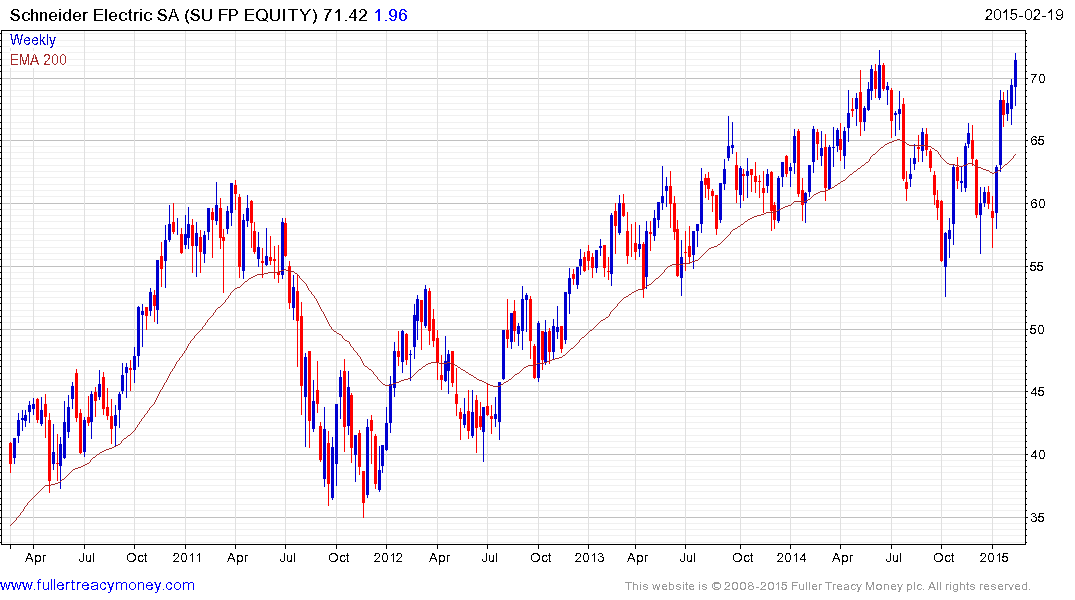
France listed Schneider Electric is benefitting from the weak Euro and has rebounded from the October low to test its highs. Some consolidation in this area is possible but a clear move below the 200-day MA would be required to question medium-term scope for additional upside.
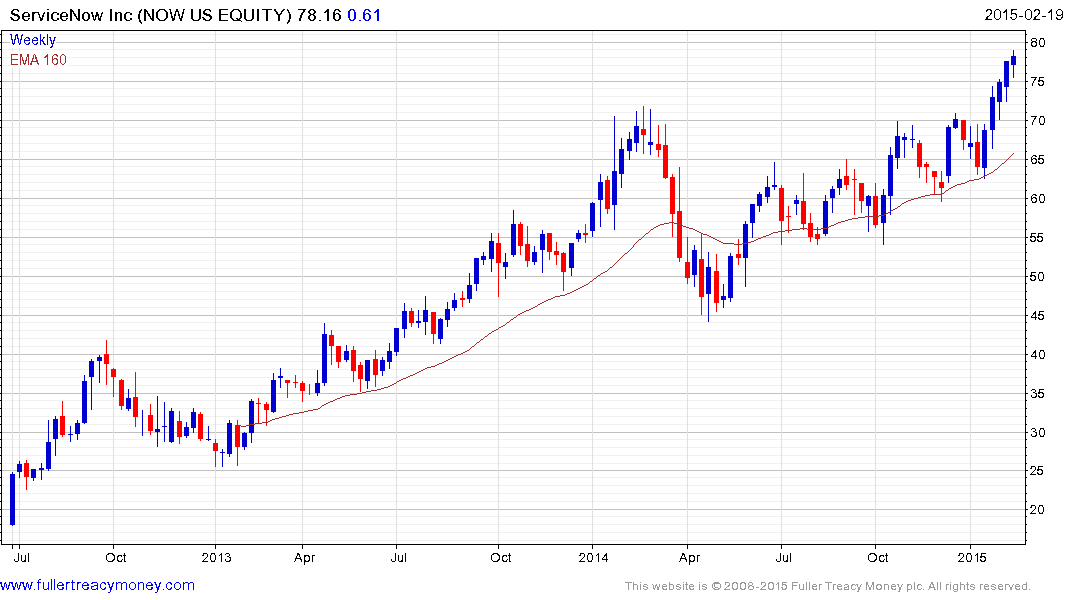
US listed ServiceNow in the infrastructure software sector has a market cap of $11.5 billion but has yet to turn to profit. The share broke out of an almost yearlong range in January and a sustained move below $65 would be required check the consistency of the advance.
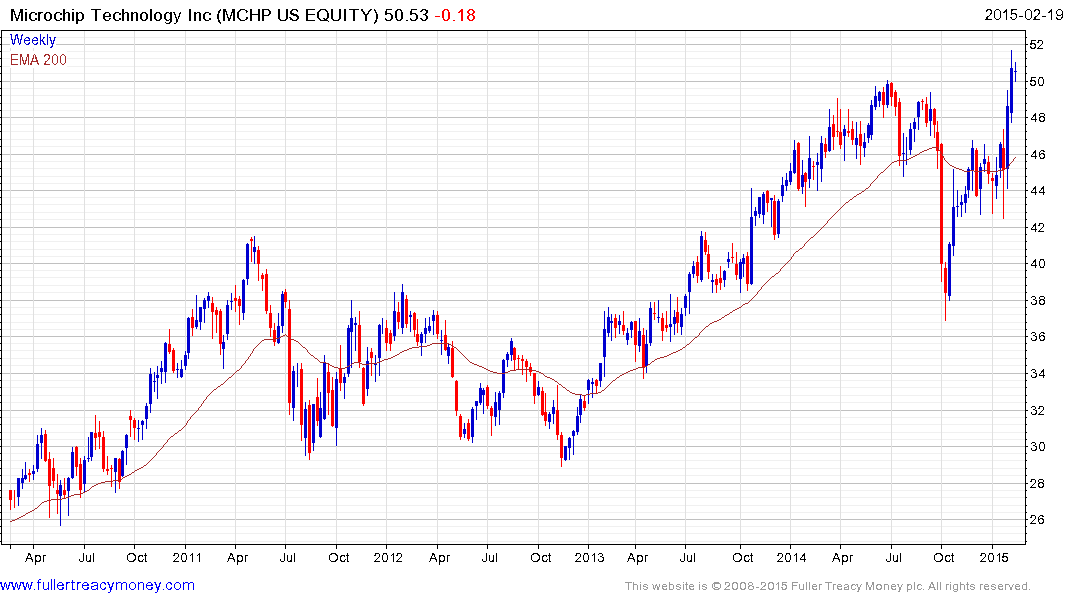
Microchip Technology, one of the original Autonomies found support in October at the upper side of its long-term range and has rebounded to post new all-time highs. Some consolidation is possible in this area but a sustained move below the MA would be required to question medium-term scope for continued upside.
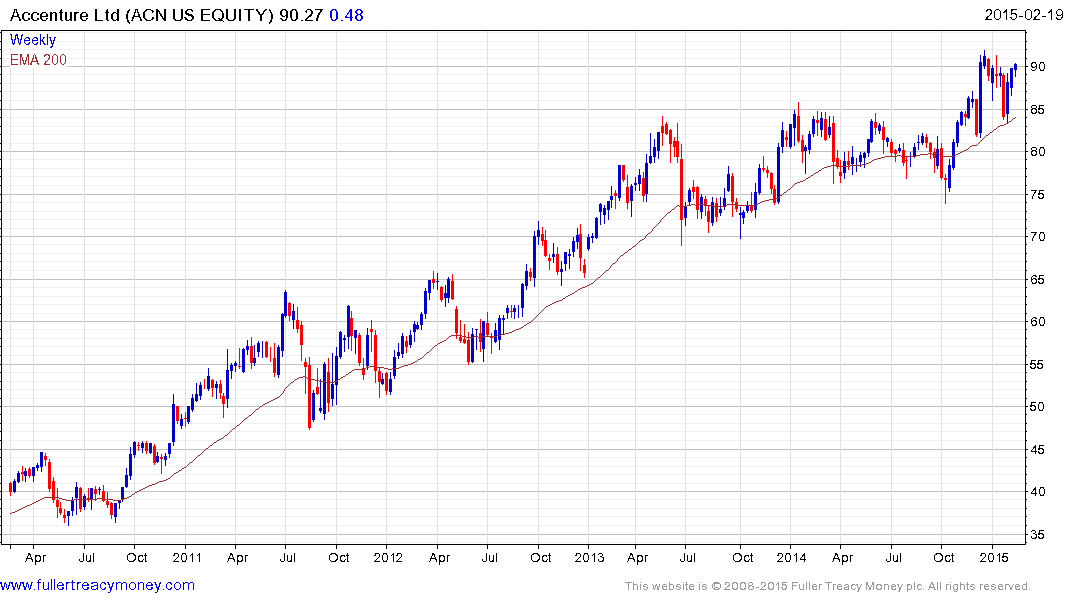
Accenture has been consolidating above an 18-month base since January and a sustained move below $80 would be required to question medium-term scope for continued upside.
Back to top


